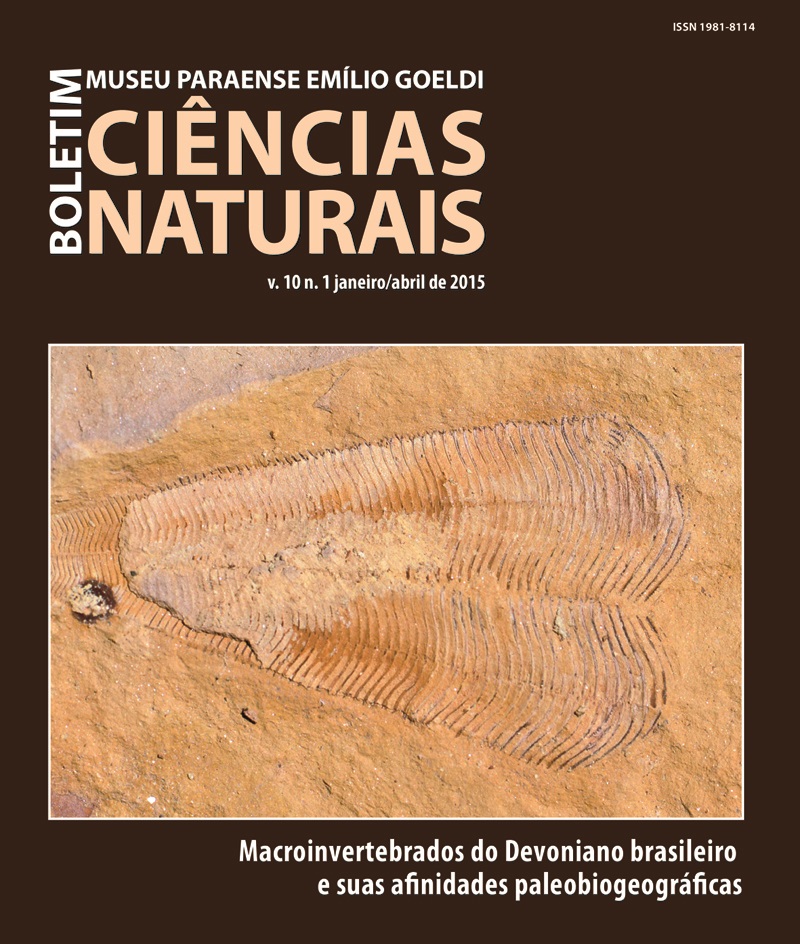Conulariids of Devonian of Brazil: paleobiogeography importance
DOI:
https://doi.org/10.46357/bcnaturais.v10i1.495Keywords:
Conulatae, Devonian, Paraná Basin, Parnaíba Basin, Amazon Basin, PaleobigeographyAbstract
Conulariids are extinct cnidarians, in most cases with phosphate carapace, occurring from Precambrian to Triassic. Conulariids are characteristic of faunas of Malvinokaffric Realm, being abundant in the Devonian fossil assemblages. Other occurrences are observed in Argentina, Peru, Paraguay, Uruguay and South Africa. In Brazil, occurr in the Amazon, Paraná and Parnaíba basins. The Devonian fauna of conulariids in Brazil is undiversified, when compared with the coeval fauna in Bolivia. Conularia quichua is the dominant species in Brazil and Bolivia. The wide paleobiogeographic distribution of species in the Malvinokaffric Realm suggests that these were eurythermal, once occurring on lands of Andean, Brazilian and South African Malvinokaffric provinces. These last two areas were located at high latitudes, near the Devonian South Pole, while the Andean was located around 40º to 45º south latitude. The presence of C. quichua in the Amazon Basin reinforces the cosmopolitan character of the species and demonstrates the feasibility of paleobigeographical communications between the different areas of the Middle and Upper Devonian of the intracratonic basins of South America. Here we present data about discussion of paleobiogeographical implications of different occurrences of conulariids in the Devonian of Brazil.
Downloads
Published
Issue
Section
License
Publication means fully assigning and transferring all copyrights of the manuscript to the journal. The Liability Statement and
Assignment of Copyrights will be enclosed with the notice of acceptance. All the authors must sign the document and return it to the journal.






